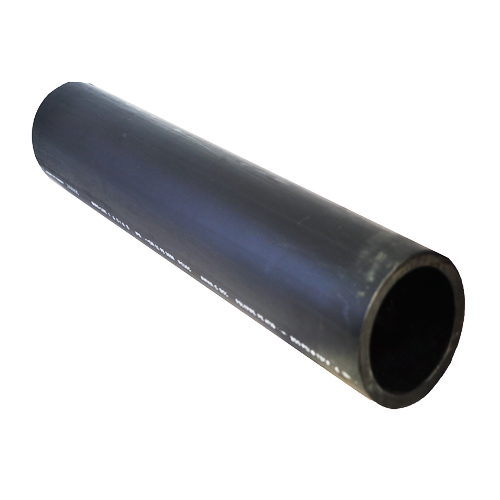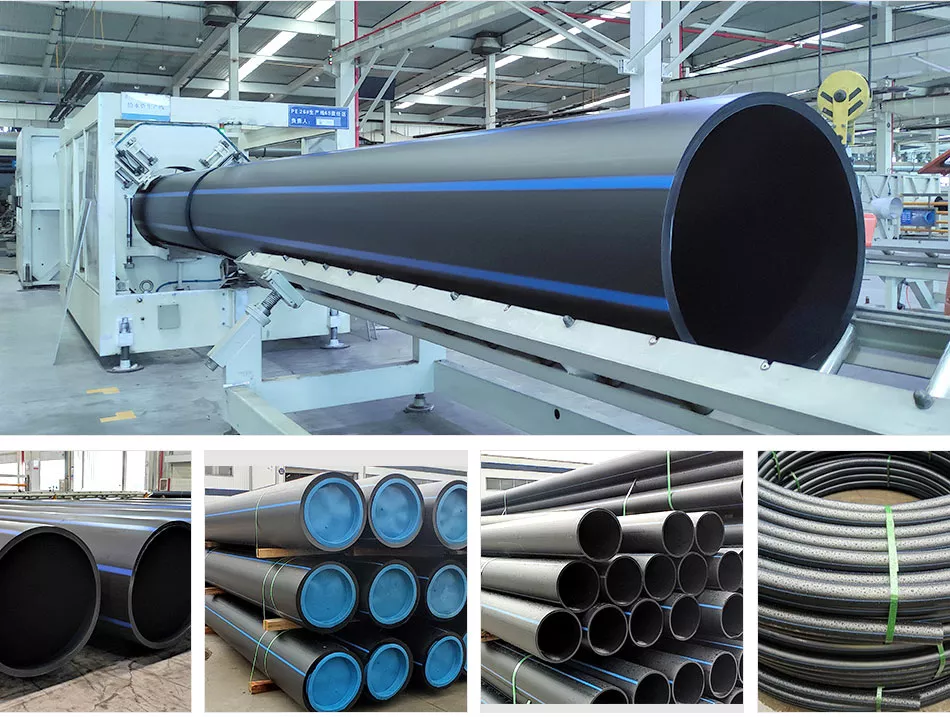How American Plastics HDPE Pipe Manufacturing Maintains Sustainability
The Important Steps for Effective Installment of HDPE Pipe in Your Next Project
Successful installation of HDPE pipe needs careful planning and implementation. Secret steps consist of evaluating project demands, preparing the site, and choosing proper signing up with methods. Each phase plays a vital duty in ensuring the honesty and performance of the pipe. Understanding these essential steps can considerably influence the general success of the job - Pipe Supplier American Plastics Midland. The subtleties of each action might hold the key to getting over common obstacles dealt with throughout installation.
Recognizing the Benefits of HDPE Pipe
High-density polyethylene (HDPE) pipe provides numerous advantages that make it a favored selection for numerous applications. Its high resistance to corrosion and chemicals assurances longevity sought after environments, significantly expanding the lifespan of installations. In addition, HDPE's versatility enables for less complicated installation, especially in difficult surfaces, as it can flex without damaging. The lightweight nature of HDPE pipe streamlines transport and handling, decreasing labor costs during setup.
Moreover, HDPE pipeline is recognized for its low friction coefficient, which boosts fluid flow and decreases energy usage. Its smooth building lowers the danger of leakages, contributing to much better source monitoring and environmental defense. In addition, HDPE is recyclable, straightening with lasting practices and lowering environmental impact. In general, the combination of stamina, adaptability, and eco-friendliness makes HDPE pipeline a superior choice for a vast array of projects, from water circulation to industrial applications.
Preparation Your HDPE Pipe Setup
When preparing an installment of HDPE pipe, mindful consideration of numerous key aspects is essential to secure an effective project. Initially, job managers have to examine the details needs of the pipe, consisting of the intended usage, flow prices, and environmental problems. Understanding these criteria will guide the choice of proper pipe measurements and material quality.
Next off, timelines should be established, factoring in purchase schedules and any prospective hold-ups. Coordination with regional authorities for licenses and regulatory compliance is likewise important. Furthermore, an in-depth budget should be prepared, incorporating all expenses associated with materials, labor, and equipment.
It is important to engage a qualified group experienced in HDPE pipeline installation. Their expertise will certainly assist mitigate dangers, warranty adherence to market criteria, and inevitably add to the project's success. Extensive preparation lays the foundation for a smooth installation procedure and long-lasting efficiency of the HDPE piping system.
Preparing the Site for Installation
Correct site preparation is crucial for the successful setup of HDPE pipeline. Before installment begins, the site must be extensively analyzed to guarantee it meets all essential demands. This includes evaluating the ground for existing structures, utilities, and potential dangers that might hamper the installment process.

Proper elevation and placement ought to be established to maintain a constant slope for water drainage objectives. Appropriate drain around the setup website is also necessary to stop water accumulation, which can lead to problems down the line.
Techniques for Signing Up With HDPE Pipelines
Achieving a dependable link between HDPE pipelines is crucial for guaranteeing the stability and durability of the setup. Various techniques exist for joining these pipelines, each matched for various project demands. Combination welding is one of the most common methods, utilizing warm to bond the pipe finishes with each other, developing a seamless and durable link. This strategy can be more categorized into socket blend and butt fusion, relying on the pipe setups.
Mechanical installations are one more choice, using clamps and threaded adapters to sign up with areas of HDPE pipe. While generally faster to mount, they might need additional upkeep in time. Electrofusion is a specialized technique that involves using electric present to heat and fuse the pipelines through specially developed installations, making sure a strong bond. Selecting the ideal joining strategy is critical, as it directly influences the overall efficiency and dependability of the HDPE piping system in the intended application.
Testing and Evaluation of Installed Pipes
The testing and assessment of installed HDPE pipelines are crucial to guaranteeing their functionality and durability. This procedure includes aesthetic evaluation methods, pressure screening methods, and leakage discovery procedures to determine potential issues. By employing these techniques, experts can validate the integrity of the installment before it is taken into use.
Aesthetic Inspection Techniques
Utilizing effective aesthetic examination strategies is important for guaranteeing the stability of set up HDPE pipes. Inspectors should systematically check out all visible sections of the pipeline to determine any kind of indicators of damage, misalignment, or improper installment. Key signs to assess consist of joint stability, surface area abnormalities, and connections. Inspectors may use tools such as amplifying glasses or electronic cameras to boost exposure and information. It is vital to check for indicators of ecological stress, such as bending or too much bending, which might compromise efficiency. Constant documentation of findings permits for tracking adjustments gradually and assists guide necessary repair services. By adhering to recognized visual inspection protocols, job teams can especially decrease the threat of future failures and assure lasting integrity of the piping system.
Pressure Examining Approaches
Aesthetic inspection works as an initial procedure, yet it is not sufficient by itself to ensure the performance of set up HDPE pipelines. Stress screening methods are vital for ensuring the honesty of these systems. Typically, hydrostatic testing is used, where the pipelines are filled with water and based on pressure levels over the desired operating stress. This approach helps recognize weak points or potential leaks. Pneumatically-driven screening can additionally be used, although it brings higher threats as a result of the compressibility of air. Despite the approach sewer lateral replacement chosen, adhering to industry criteria and security procedures is essential. After performing pressure tests, complete documentation is required to confirm the outcomes and validate that the setup satisfies all operational requirements prior to proceeding to the next phase of the task.

Drip Discovery Procedures
How can one ensure that mounted HDPE pipes are without leakages? Efficient leakage discovery treatments are vital to secure the integrity of the system. Visual assessments ought to be performed, looking for indications of water accumulation or soil erosion around pipeline joints. Following this, stress testing can validate the system's toughness. A typical technique is the hydrostatic test, where water is introduced under pressure, keeping an eye on for drops that suggest prospective leaks. Furthermore, progressed modern technologies, such as acoustic sensing units or infrared thermography, can spot leakages that might not be visible. Routine tracking and maintenance more contribute to the longevity of HDPE pipes, guaranteeing they continue to be leak-free throughout their functional lifespan. Proper documentation of these procedures is essential for compliance and future recommendation.
Maintenance Tips for Long-Term Efficiency
To ensure the long life of HDPE pipes, developing a regular evaluation routine is vital. This aggressive strategy enables the early discovery of prospective issues, lessening costly repair services. Additionally, applying appropriate cleaning methods will certainly aid maintain peak performance and protect against buildup that can influence capability.
Regular Evaluation Schedule
Although HDPE pipes are known for their resilience and resistance to rust, establishing a regular examination timetable is crucial for ensuring their long-lasting performance. Routine inspections assist identify possible concerns such as leakages, joint honesty, and environmental effects that may influence the pipe's capability. It is suggested that examinations occur at least biannually, or extra frequently in atmospheres with extreme conditions. American Plastics HDPE Pipe for Oilfield. Throughout these analyses, visual checks need to be conducted to discover indicators of wear or damage. Additionally, using modern technology such as ultrasonic testing can offer additional insights right into the pipe's condition. By carrying out an organized examination schedule, project supervisors can proactively resolve problems, thereby expanding the life expectancy of HDPE pipelines and keeping system efficiency
Proper Cleansing Techniques
Correct cleaning techniques play an important duty best drain camera in keeping the long-term efficiency of HDPE sch 80 pvc fittings pipes. Normal cleansing avoids the build-up of debris, debris, and biofilm, which can result in blockages and lowered circulation effectiveness. Operators must use methods such as high-pressure water jetting or foam cleansing to effectively remove impurities without damaging the pipeline surface. It is vital to prevent using severe chemicals that might deteriorate HDPE product. Additionally, arranged upkeep checks need to include aesthetic evaluations for any type of indicators of wear or damages. Effectively trained workers must execute these cleaning procedures, ensuring conformity with safety and environmental laws. By carrying out these techniques, the lifespan of HDPE pipes can be significantly expanded, making certain perfect performance throughout their operational life.
Frequently Asked Concerns
What Are the Ecological Impacts of HDPE Pipe Production?
The environmental influences of HDPE pipe manufacturing include greenhouse gas discharges, power intake during manufacturing, prospective plastic contamination, and obstacles in reusing. HDPE's durability and resistance to rust can mitigate some ecological concerns.
How Does HDPE Pipe Contrast to Various Other Materials?

What Tools Are Essential for HDPE Pipeline Setup?
Crucial devices for HDPE pipeline setup consist of a blend maker, pipeline cutters, shovels, determining tape, and security equipment. Correct equipment assurances efficient, secure handling and setup, contributing to the project's total success and honesty.
Are There Any Kind Of Particular Regulations for HDPE Pipe Installment?
Details policies for HDPE pipeline setup differ by area, usually controlled by neighborhood, state, or government codes. Compliance with these laws warranties safety, environmental management, and capability, making adherence necessary for effective task results.
Can HDPE Water Lines Be Recycled After Usage?
Yes, HDPE pipelines can be reused after usage. Their thermoplastic nature enables for reprocessing, making them suitable for reusing right into new products. This sustainability facet adds to environmental preservation and promotes round economic situation methods in building and construction.